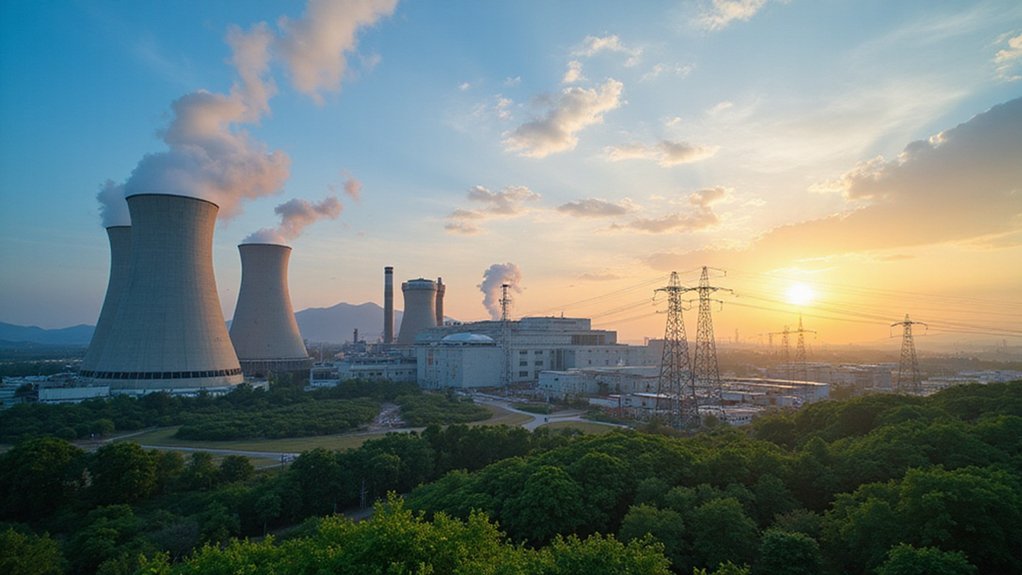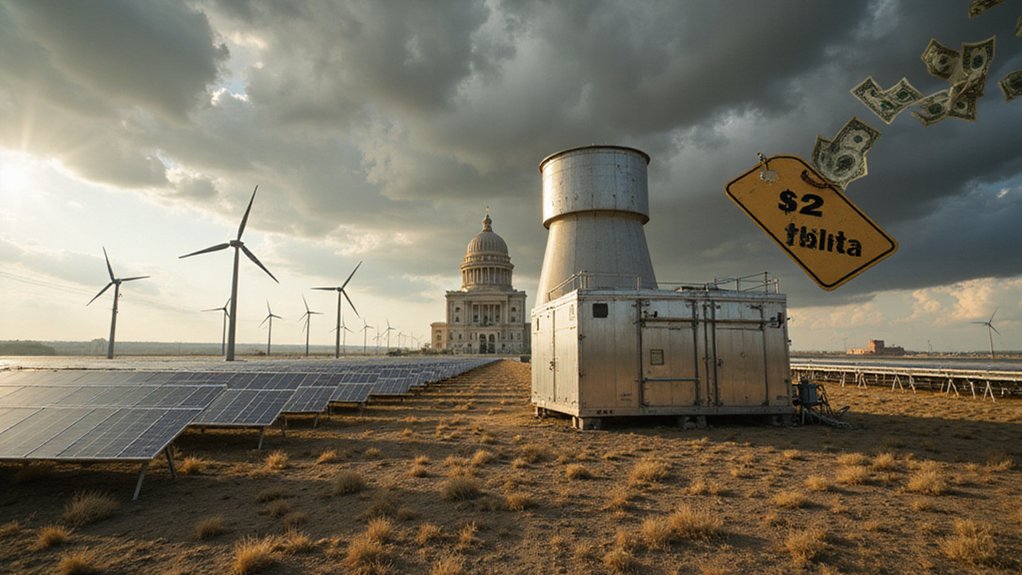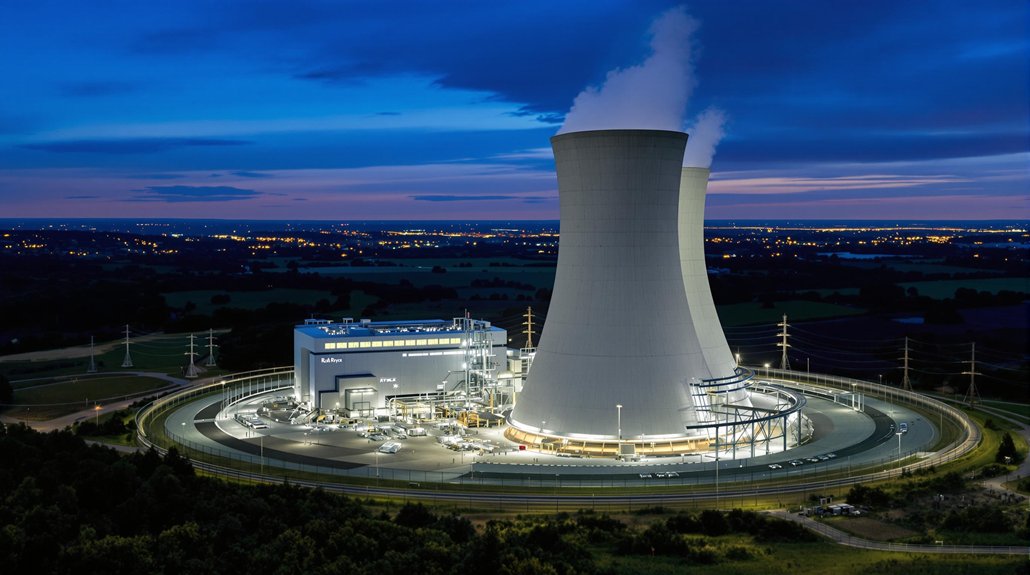South Korea’s energy framework has undergone a seismic shift in 2024, with nuclear power finally dethroning coal as the nation’s dominant electricity source. After years of back-and-forth policy debates, nuclear generation now accounts for a whopping 34.5% of the country’s electricity. About time, honestly. The planet’s been waiting.
The numbers don’t lie. With total national power generation hitting 595.6 terawatt-hours, nuclear has outpaced both dirty coal and fossil-fuel dependent LNG. Coal’s decline marks a critical step toward decarbonization—something conservatives fought against for years. Funny how clean energy wins in the end.
Looking ahead, Korea’s nuclear capacity is set to expand dramatically from 24.7 GW in 2023 to between 31.7 and 35.2 GW by 2038. Six new large reactors will come online by 2033. The construction of Shin Hanul 3&4, which was previously suspended, is now scheduled to restart with preliminary construction in September 2023. Three more will follow by 2038. Small modular reactors are joining the party too.
Korea’s nuclear future is booming—nearly doubling capacity by 2038 with nine new reactors plus SMRs in the pipeline.
These plans weren’t created in a vacuum. The government’s 10th and 11th Basic Plans for Electricity Supply and Demand spell out the details. They’re revised every two years. Smart move. Technology changes. Demand shifts. Policy must adapt.
What’s driving this nuclear renaissance? Industries. Lots of them. Semiconductors. AI. Data centers. They’re electricity hogs—and growing fast. This aligns with global trends where companies like Microsoft and Google are investing heavily in nuclear capacity to power their expanding AI and data center operations. Semiconductor demand alone will hit 15.4 GW by 2038. Data centers? Initially forecast at 1.4 GW, now projected at 4.4 GW. That’s growth.
The bigger picture shows nuclear and renewables combining to provide 70.7% of generation by 2038. The plan aims to quadruple renewable energy capacity to 121.9 GW by 2038, up from 30 GW in 2023. Solar capacity will reach 77.2 GW with wind adding 40.7 GW. Energy storage systems will hit 138 GWh. That’s real climate action.
Korea’s not stopping at home. They’re aiming to export 10 nuclear units by 2030. Global leadership in climate tech—a sector that progressive countries have championed while others denied climate science. Progress happens, whether laggards like it or not.
References
- https://world-nuclear.org/information-library/country-profiles/countries-o-s/south-korea
- https://ieefa.org/resources/south-koreas-11th-power-plan-makes-partial-progress-towards-decarbonization
- https://koreajoongangdaily.joins.com/news/2025-05-11/business/industry/Nuclear-power-becomes-No-1-energy-source-for-Korea-for-first-time-in-2024/2304532
- https://www.neimagazine.com/news/south-korea-unveils-nuclear-development-plan/
- https://www.enerdata.net/publications/daily-energy-news/south-korea-new-nuclear-renewable-power-plan.html








